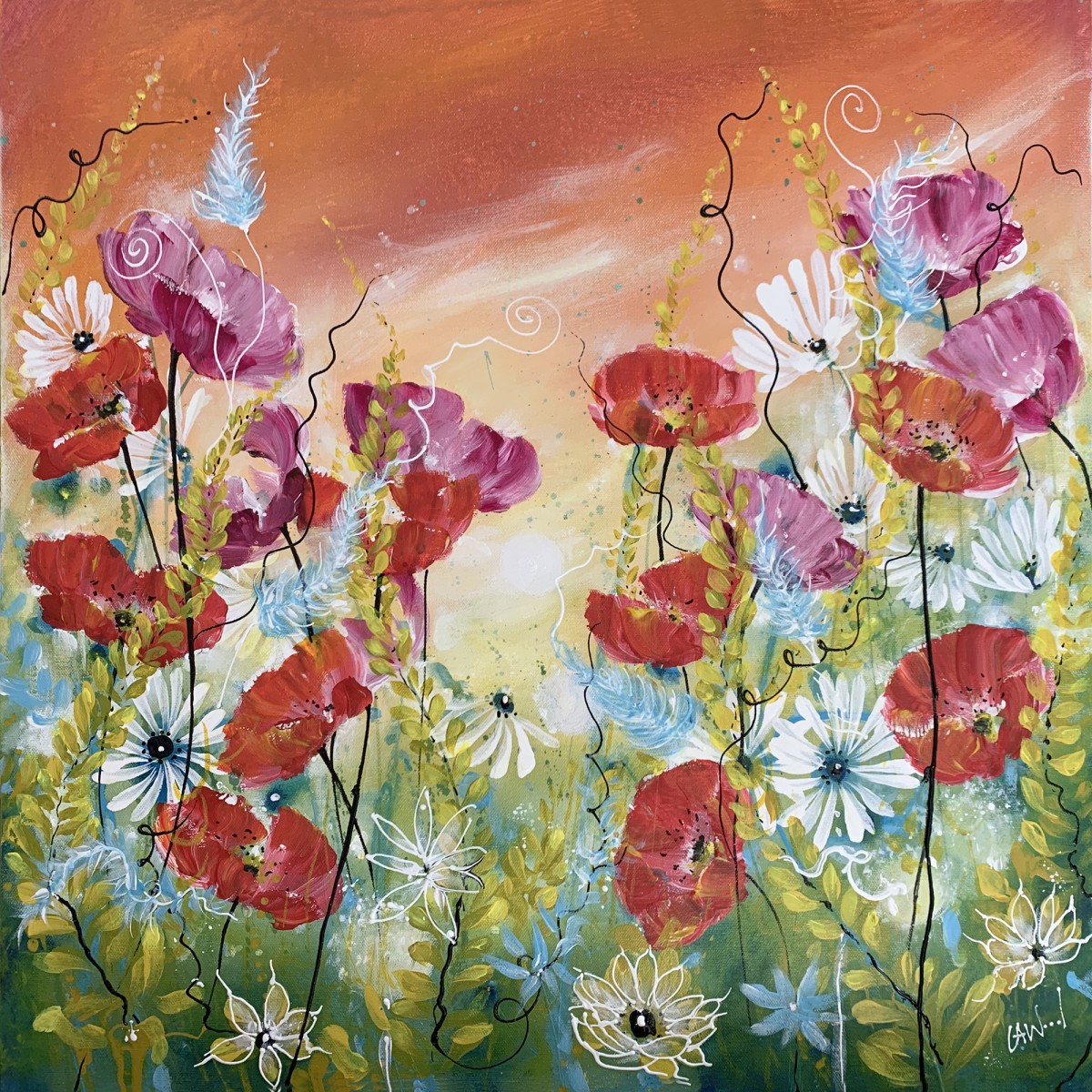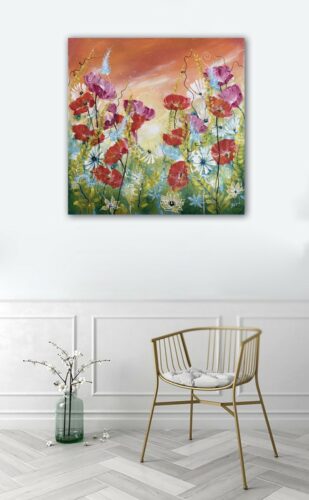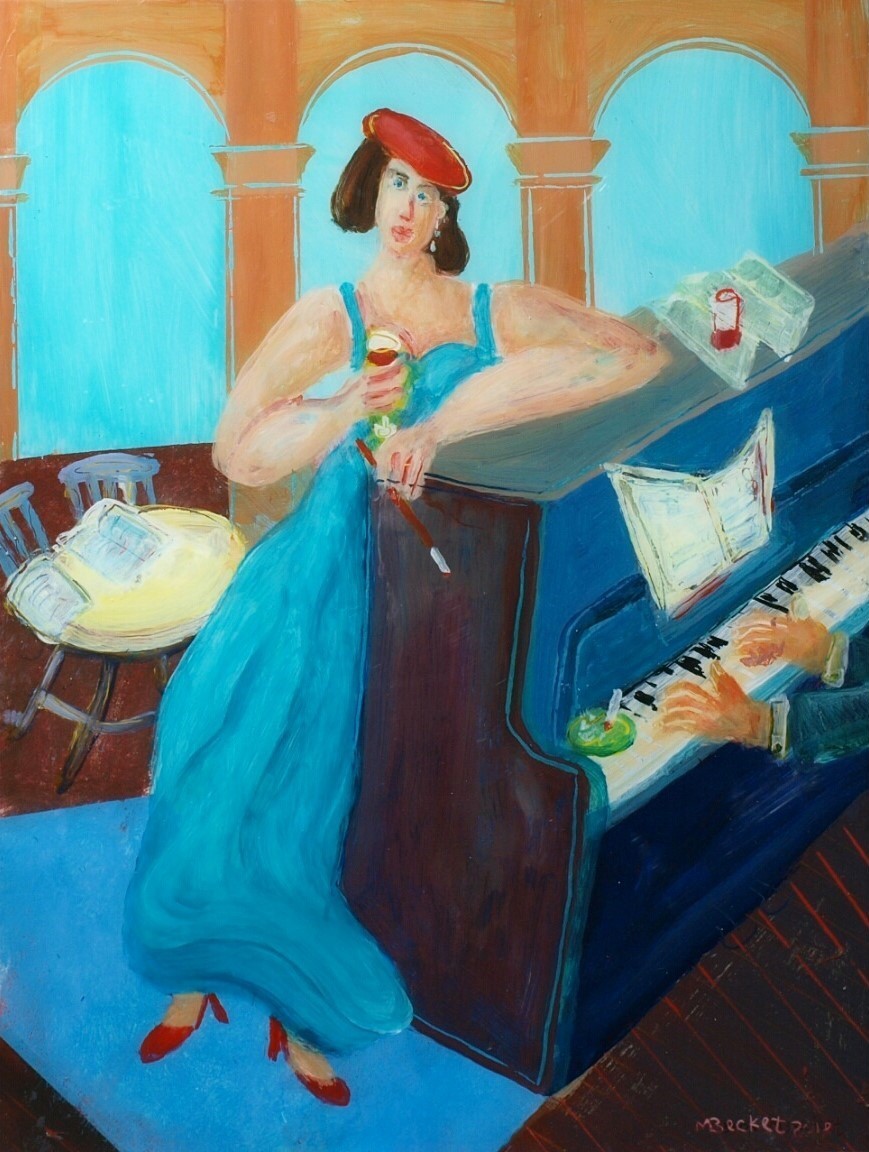Carol Ann Wood has created a stunning image of poppy flowers and daisies in Poppy Floral Landscape. When looking at the painting the viewer is immediately taken in by the way in which the background and the foreground work together to create depth. But it is not just the play of the main subject to the background which makes this piece stunning. Creative use of colour, highlights, and patterns all lend to the overall composition of this piece.
Oils and Acrylics are paired beautifully in this piece. Colours used in this painting are analogous to one another for the most part. The reds and the oranges used in the sky do not compete for attention but flow from one to another creating a harmonious feel rather than a competing aesthetic to the painting. While there are greens and oranges (secondary colours), these too are made non-competitive with the use of yellows throughout the piece.
Highlighting the painting are illustrative lines of white. These curls and trace marks help to navigate the eye around the picture. Note how the curls bring your eye to the negative space of the painting and then how the white highlight of the background draws the eye back down to the middle of the painting. And just to create a focal point for the background, a white circle has been painted at the centre as a starting point.
Careful use of outlining of the flowers at the base of the painting help to move the eye from left to right while the whites of the daisies bring the eye from the top to the bottom. All in all, the use of the whites and the outlining technique within this piece of art keeps the eye in constant movement when viewing the painting.
There is a textural feel to this painting which can be attributed to Carol Ann Wood’s training as a floral pattern and textile artist. Specifically, when viewing the painting you will note that there is a symmetry to the composition. On both sides you have three poppies followed by two poppies. You also have three purple flowers. One daisy separates the poppies at the bottom and one white daisy separates the top red poppy from the purple flower at the top of each side. Yet, the painting does not have a manufactured feel. Yes, there are patterns to be found, but because of the use of colour and the line work which overlays the flowers within the piece, the pattern becomes camouflaged.
To better understand this painting, we asked the artist the following:
Apart from the floral art and textile influences within your paintings, are there any other artists or artistic influences that you draw from when painting?
Some of my more recent artworks have been influenced by Henri Rousseau jungle paintings and his use of exaggerating flora and fauna, often making them unidentifiable and using them at decorative motifs and covering large areas of the canvas and verging on abstraction.
Please explain why you tend to use oil and acrylics to create your floral paintings.
Though it is not normal practice to use the 2 different mediums – I personally find that they work well at creating different effects, though either medium would need to be dry before working on top of the other, acrylic as the base coat. I find oil can work to highlight or create vibrancy, more so than acrylic and they also do not lose their vibrancy when used as a glaze.
Although art has different meanings to each viewer, there are certain aspects which may be conveyed by the artist. If you had to describe the overall intent of your painting to the viewer what would it be?
My intent to the viewer would be to create a feeling around the painting, rather than a focus on particular areas. Often it is an ethereal feeling I aim to capture in my painting and to convey that feeling to the viewer.
Poppy Floral Landscape is 60 by 60 cm on box canvas.



